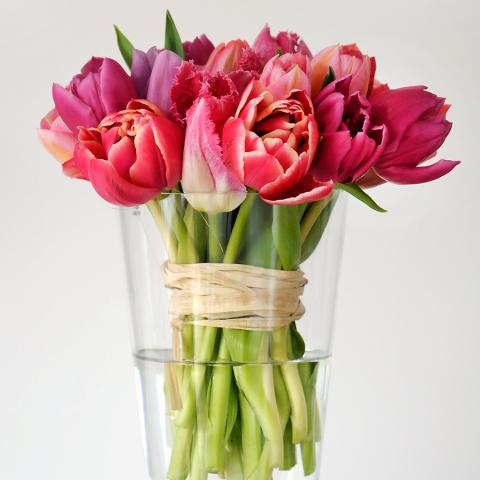How to prevent stem elongation in tulips?

The tulip is a very special flower; being a Dutch classic and a worldwide Spring favourite. A trademark of the tulip is that they tend to keep growing even when cut. This is described as stem elongation. Some people actually like this, but most don't want the tulips to keep growing once in the vase. And also as a florist the continued growth of the flower can be problematic, when used in mixed bouquets for example. As a florist there is not a lot you can do about stem elongation in tulips. But luckily, preventing stem elongation in tulips can be done with proper post-harvest treatment at the grower.
Post-harvest treatment
To counter the issue of stem elongation, Chrysal offers a post-harvest treatment called Chrysal BVB & Plus. This product is specifically designed to prevent tulip elongation while also providing other benefits for the cut flowers.
Benefits of Chrysal BVB & Plus:
- Prevents stem elongation: Chrysal BVB & Plus contains active ingredients that help inhibit the growth of tulip stems after harvest, ensuring they maintain their desired length and shape.
- Enhances vase life: The product's unique formula helps to prolong the vase life of tulips, allowing them to stay fresh and vibrant for a longer period.
- Prevents yellowing of leaves: Chrysal BVB & Plus also works to prevent the yellowing of tulip leaves, ensuring that the flowers remain aesthetically pleasing throughout their vase life.
Test results
Recent studies have shown that proper post-harvest treatment with Chrysal BVB & Plus decreases stem elongation by 56% when compared to using water alone. Also, a vase life increase of 25% was measured.
Benefits for florists and consumers
By using Chrysal BVB & Plus as a post-harvest treatment, growers can ensure that their tulips stay beautiful and fresh for an extended period. This ultimately results in a better experience for both the sellers and the consumers, who can enjoy the beauty of tulips without worrying about unwanted stem elongation or yellowing of leaves.



